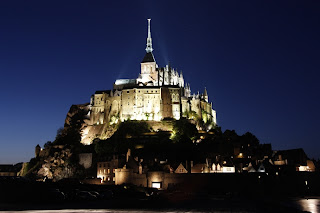Bayeaux is located 30 km north-west of Caen, a short journey from where we are staying.
The Bayeaux Tapestry was made to commemorate events in the Norman Conquest of England in 1066. It may have been designed and woven in England and is now displayed in a museum in the town centre.
The large Cathederale Notre-Dame de Bayeaux consecrated in 1077, was arguably the original home of the tapestry. It is not a Tapestry in the full sense of the word. It is an embroidery. It was constructed from eight separate pieces of linen which were joined to make up its length. It is approximately 70 metres long and half a metre wide. It is evident that at one stage it was even longer, probably by as much as seven or eight metres are missing.
Like so many artefacts, the Bayeux Tapestry survived through luck and endeavours of certain individuals and groups. Following its construction in the decade following the battle, the exact date or time it took to construct is not known, it was transported to Bayeaux. Here we assume, it was put on display in the Church of Notre Dame, which was consecrated by Bishop Odo (William's half brother) in 1077. We know that the Tapestry remained within the Cathedral walls for the next 400 years because an inventory of treasures catalogued it.
 |
| Bayeaux Tapestry Museum |
The people of Bayeux now fighting for the Republic used cloth to cover their wagons. There was a shortage of cloth until somebody remembered a supply of it in the cathedral. It was removed and used to cover a wagon. When Lambert Leonard Leforestier saw what was happening, he replaced the Tapestry with other cloth. The people of Bayeaux, determined never to allow this to happen again, the city council set up a fine arts council to protect its treasures. It was just as well that they did because two years later in 1794 it was again to be cut up and used as decoration for a public holiday. In 1803 it was removed under protest by Napoleon and transported to Paris. Napoleon used the Tapestry as inspiration for his planned attack on his natural enemy England. When this was aborted, it was returned to the people of Bayeux.
Why do banks charge you a "non-sufficient funds" fee on money they already know you don't have?





























